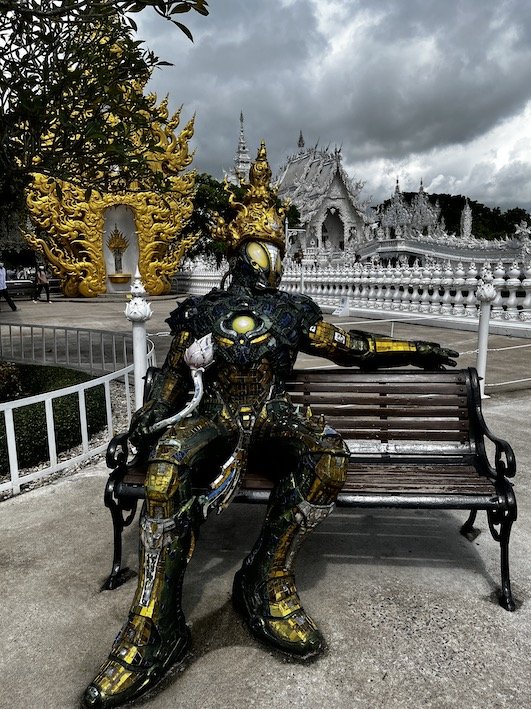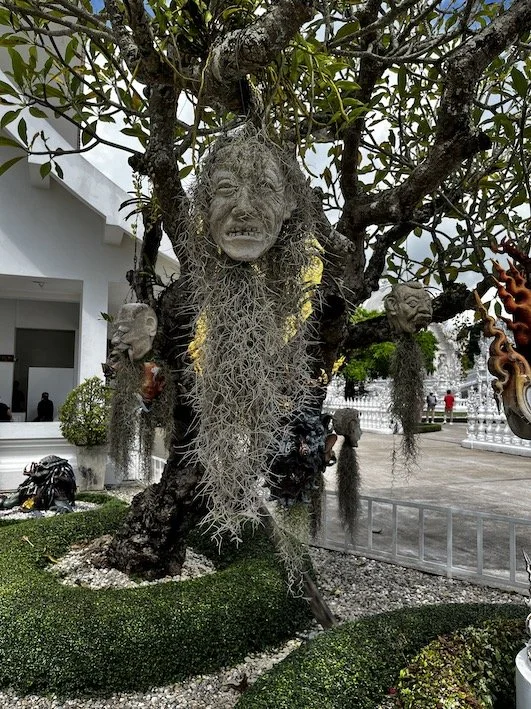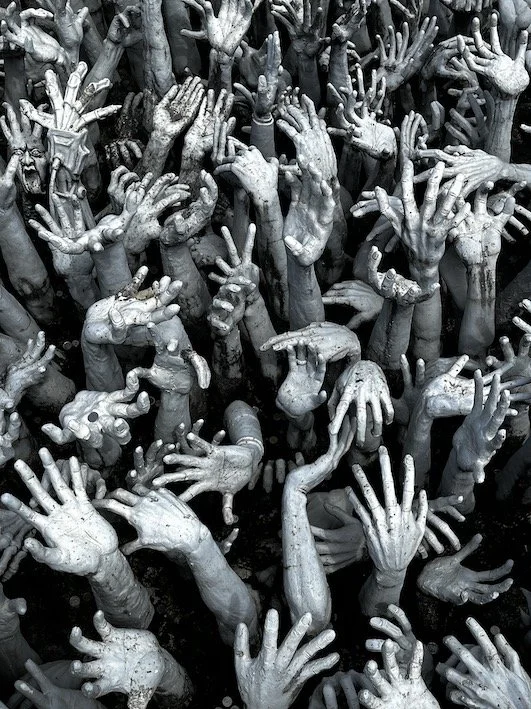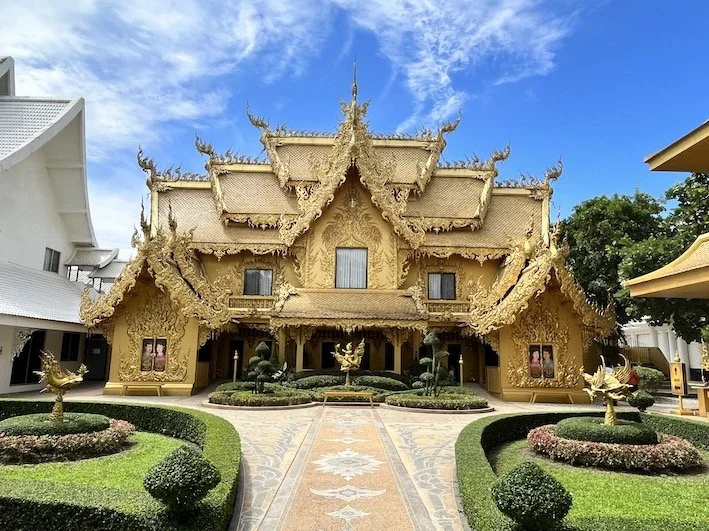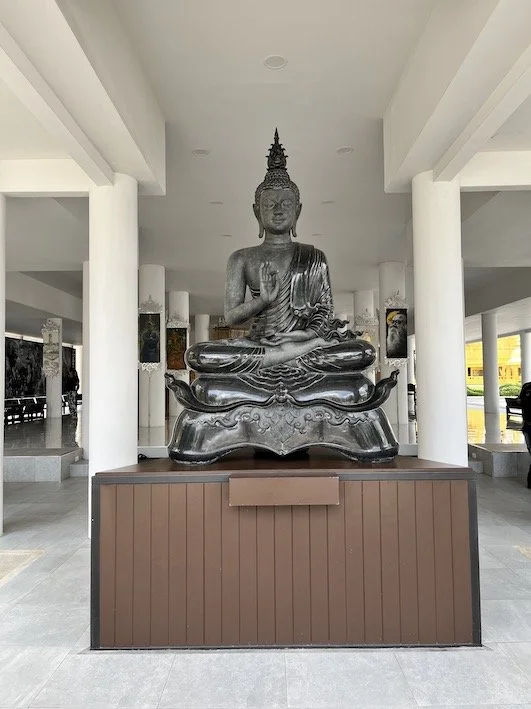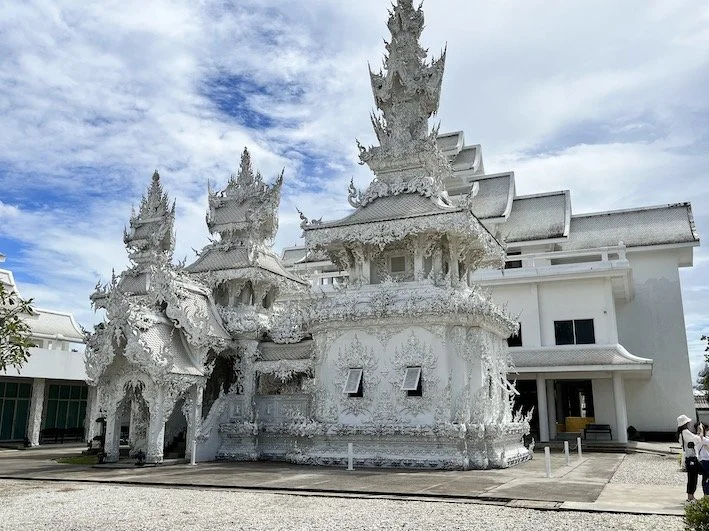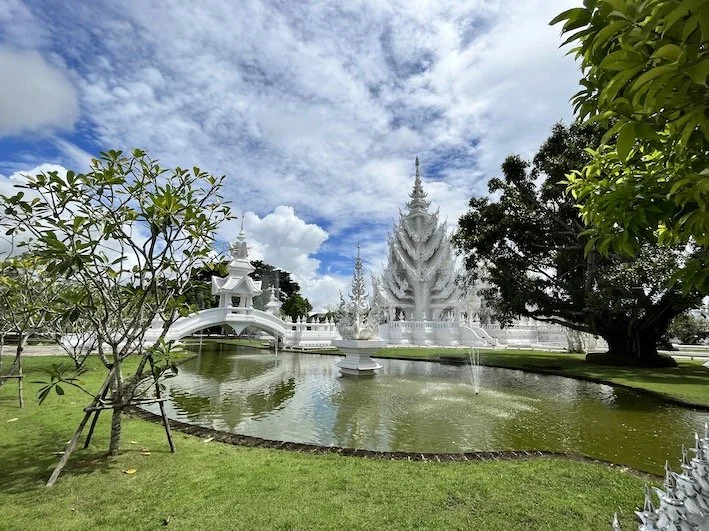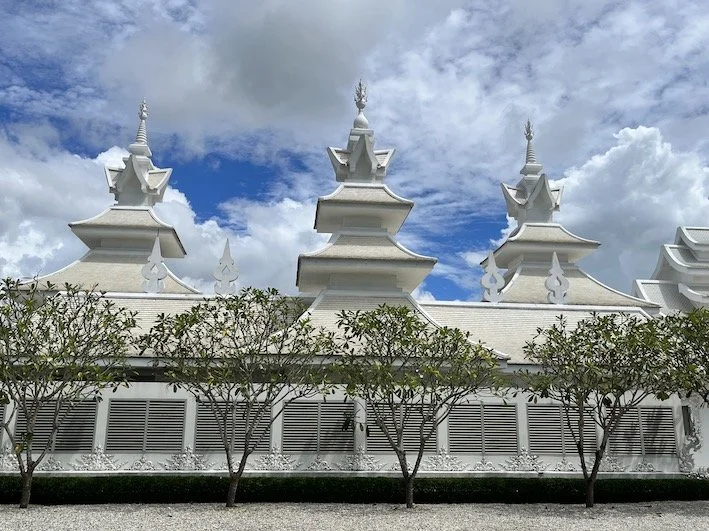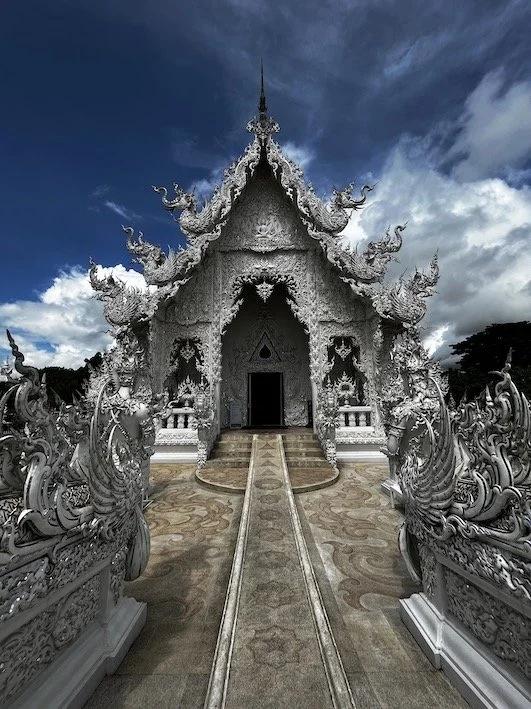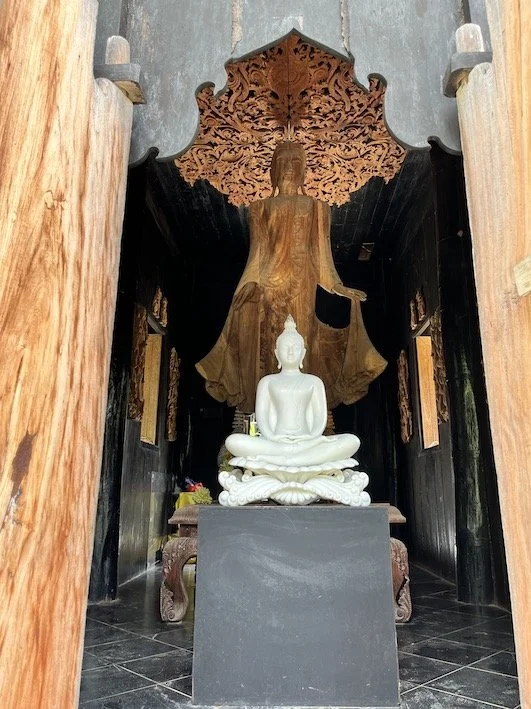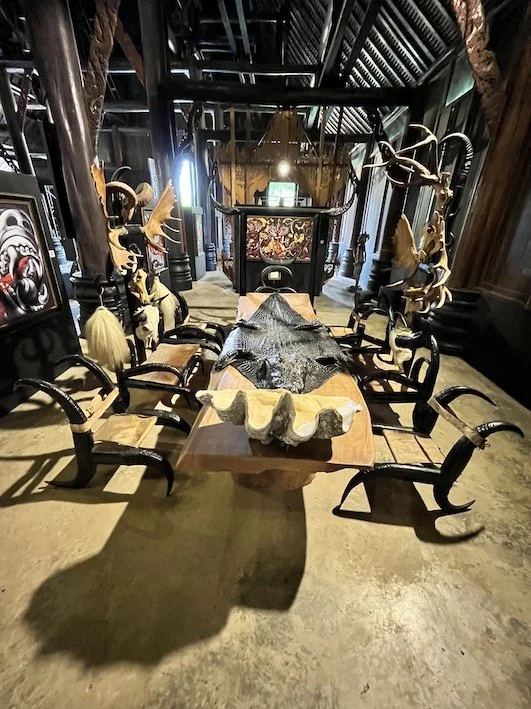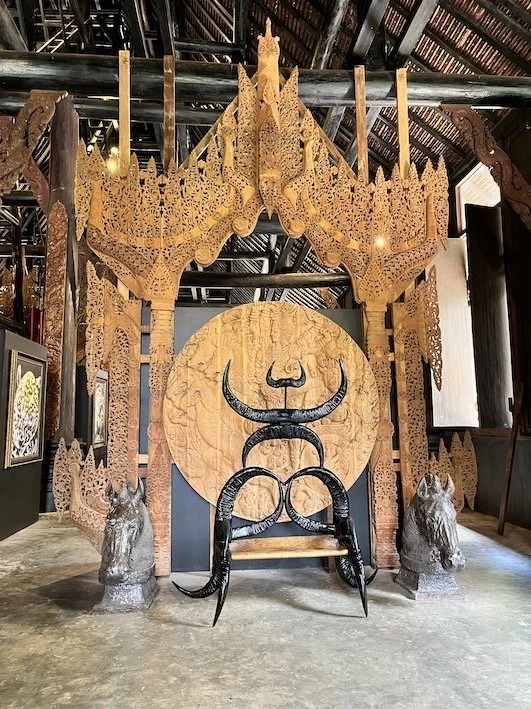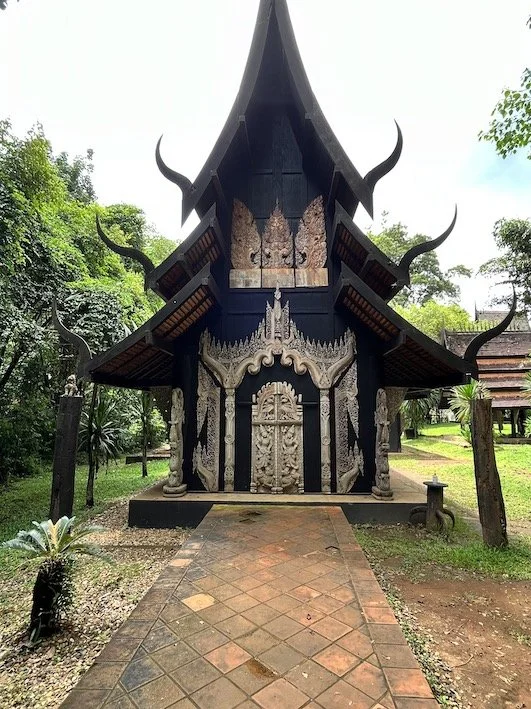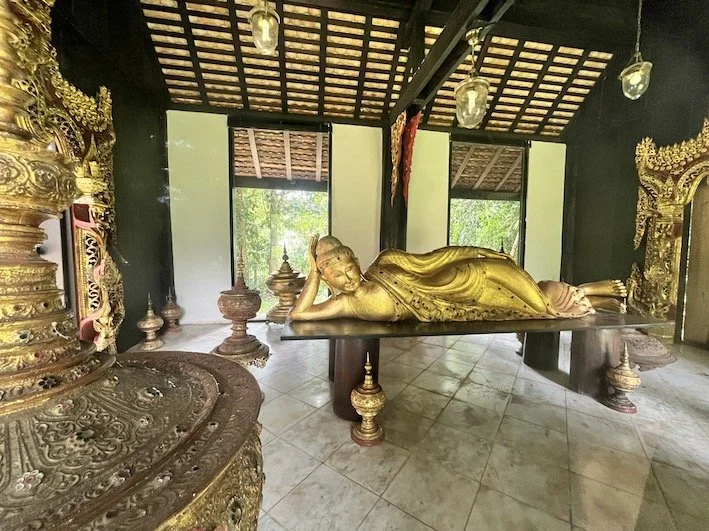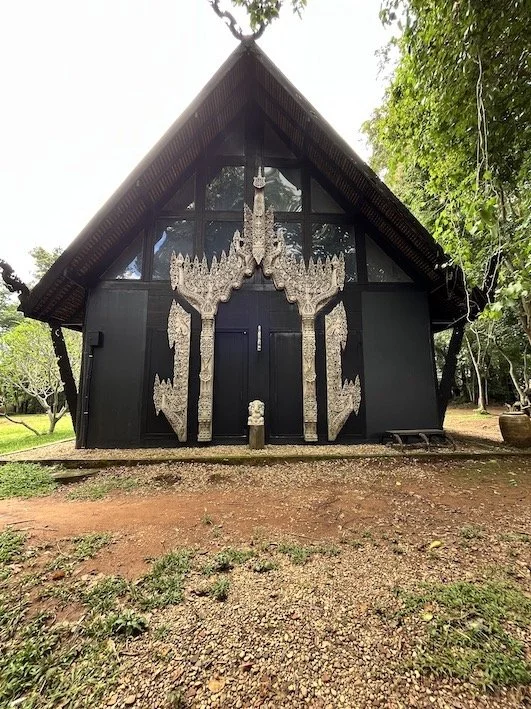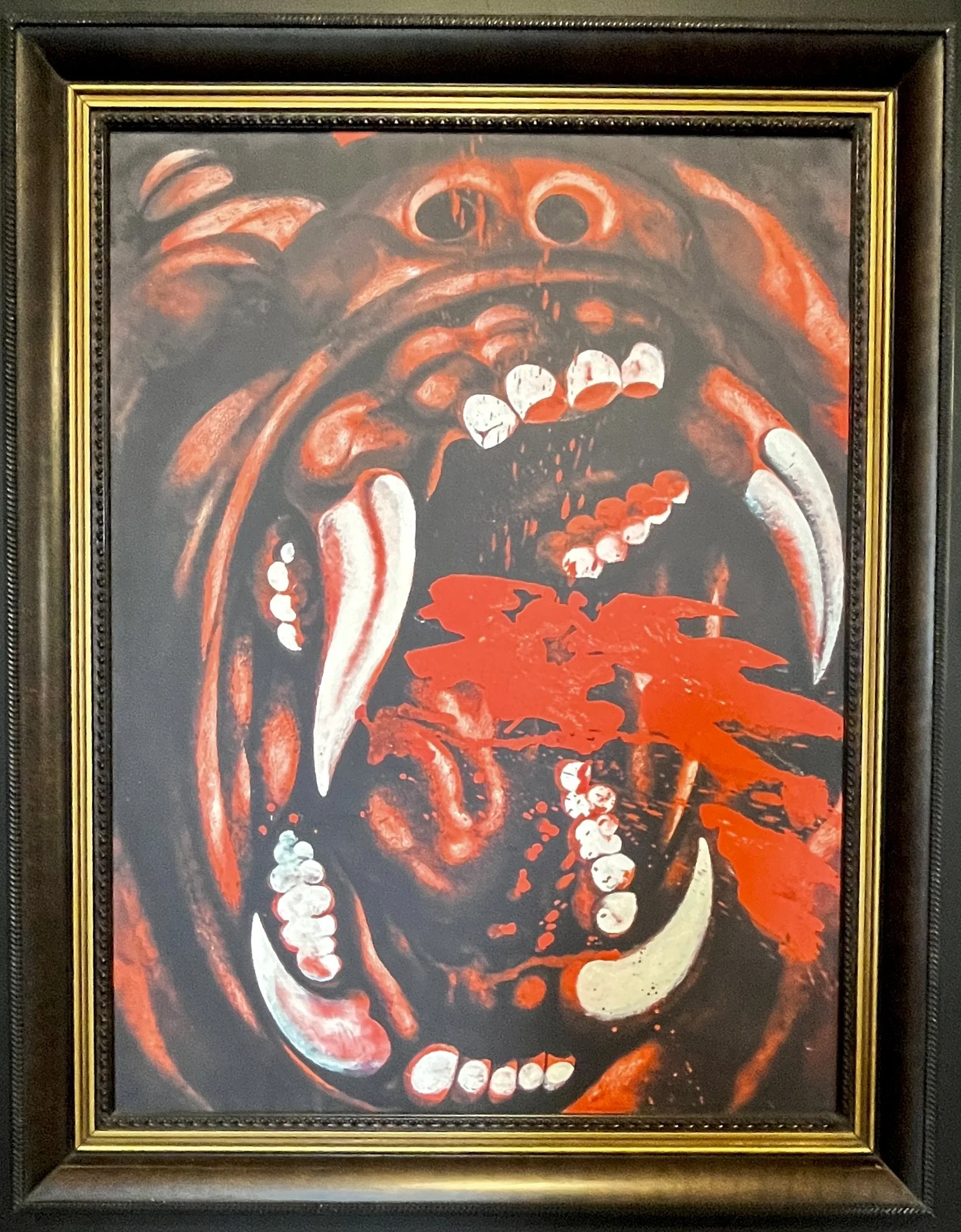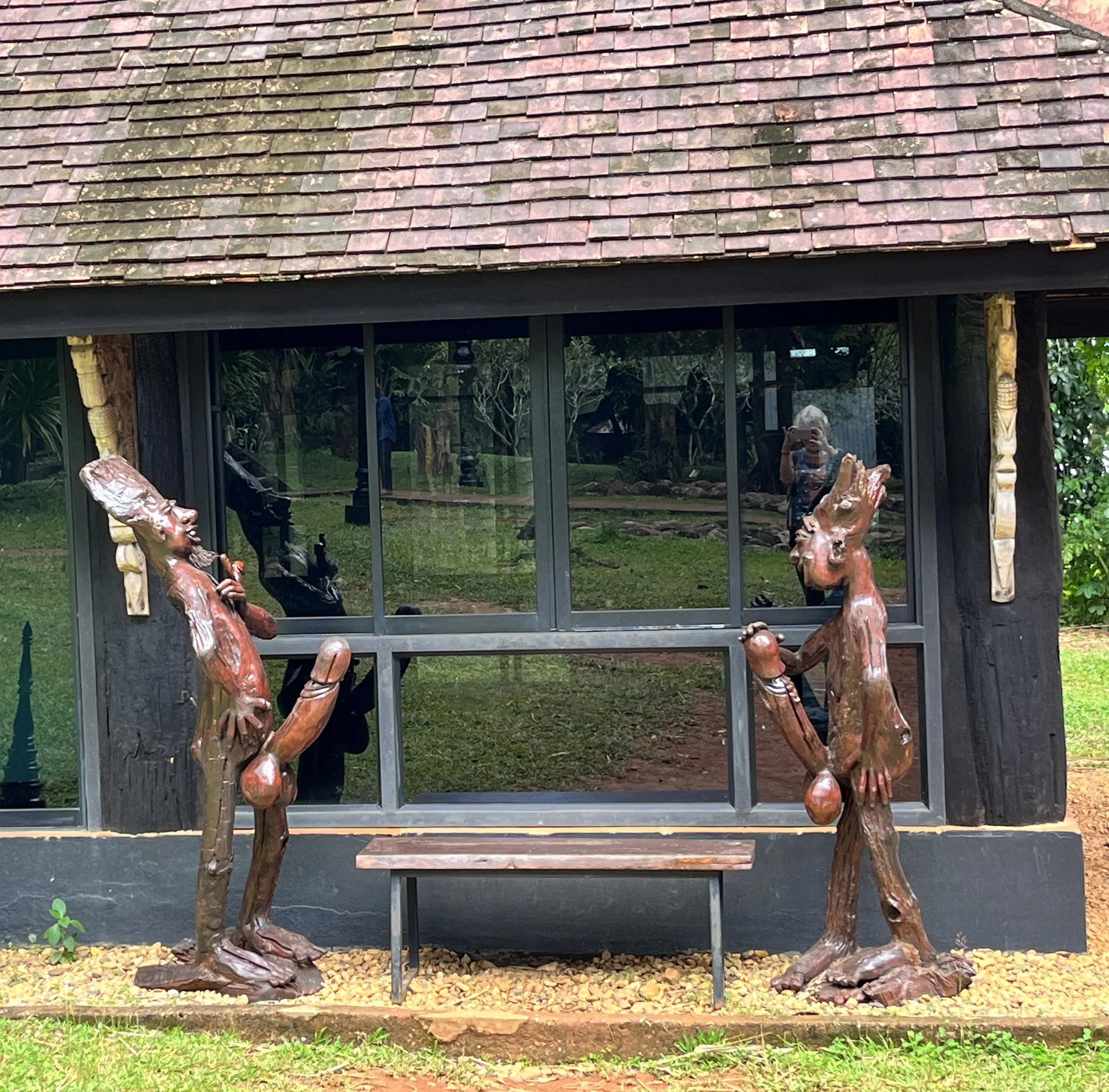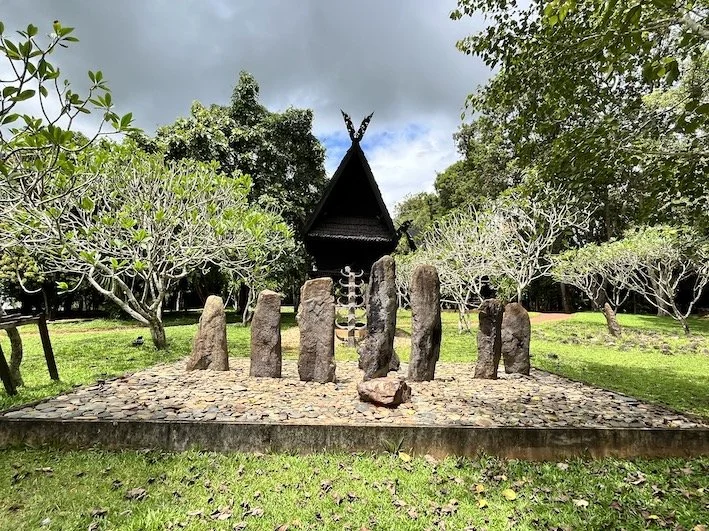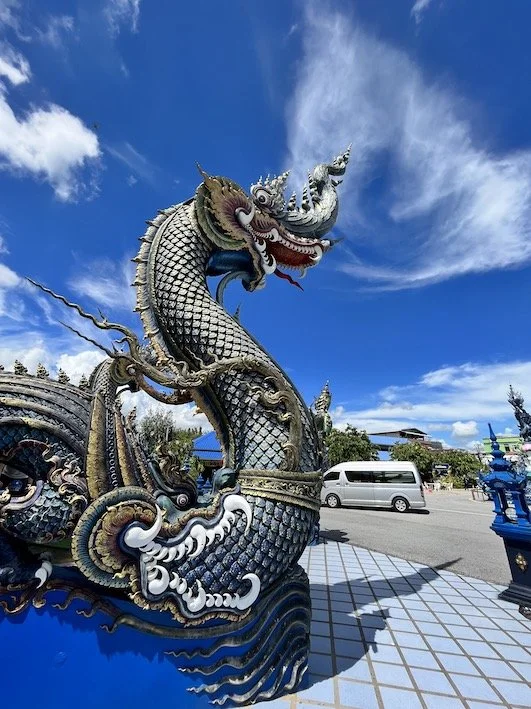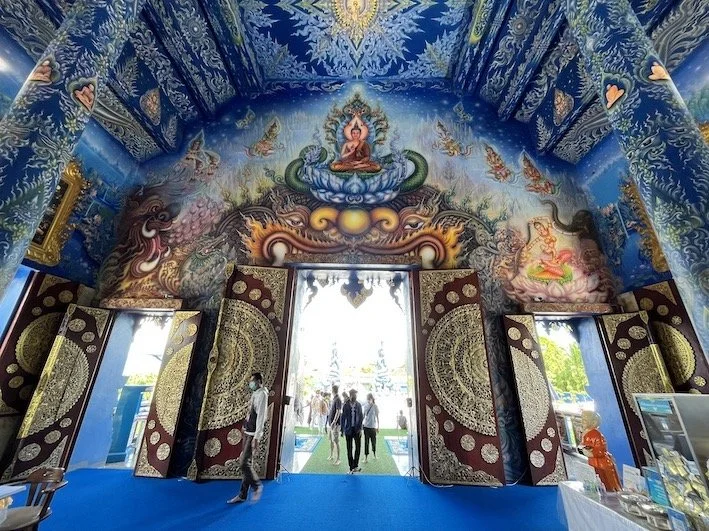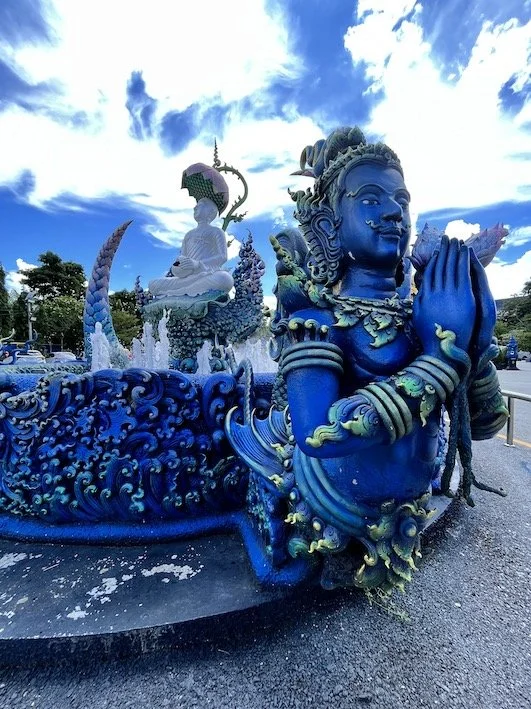Going Solo in Chiang Rai: Part 2
Three of the Most Stunning ‘Must-See’ Creations in Northern Thailand
My driver collects me at 10.00 am and within fifteen minutes we’re parked at the first of four stops on today’s itinerary that includes the White Temple (Wat Rong Khun), the Black House Museum (Baan Dam), the Blue Temple (Wat Rong Suea Ten) and the Union of Hill Tribe Villages (Akha, Yao, Kayaw, Lahu and Long Neck Karen).
Below: the White Wat
The White Temple or Wat Rong Khun as it’s known locally (10 kms south of Chiang Rai) is a stunning revamp of an original dilapidated temple site by the artist Chalermchai Khositpipat, Thailand’s most famous, successful and controversial modern artist. If you were to look him up online, you’d appreciate his delicate, colourful and spiritually focused work, some of which is reminiscent of images one encounters in ‘New Age’ stores. He began work on this site in 1997 and is said to have spent over $30 million of his own funds on the project. The site receives no government funding as it’s considered a few too many steps ‘outside the traditional square’. In much of his work, the artist challenges religious and social norms and so has come under criticism for his inclusion of elements that shock (severed heads hanging from trees, dramatic dismembered hands reaching skyward from deep pits and characters from dystopian comic books perched here and there throughout an acreage boasting dozens of truly spectacular structures in snowy white. Apart from a few golden masterpieces, all white structures are embellished with thousands of small mirrors reflecting sunlight. Despite its detractors, the White Temple is regarded as one of the most visually stunning of Thailand’s 30,000 temples especially on days like today with its brilliant blue sky and fluffy clouds forming a perfect backdrop for this artistic masterpiece – whose construction continues today. It takes at least an hour to take everything in. The entrance charge is only one hundred baht.
About twelve kilometers outside Chiang Rai is Baan Dam, known more generally as the Black House (baan meaning house and dam being Thai for black). It’s actually a collection of some forty northern Thai or Lanna style buildings in blackened wood, each with a unique name. There are also several white igloo-like constructions and one dark grey building resembling a submarine or whale – formerly the artist’s home when on-site. All structures in this vast, 160,000 m2 peaceful garden are the creation of the late, world-renowned Thai artist Thawan Duchanee. Born in 1939, he studied art in Thailand and abroad culminating in a Ph.D. Together, the building represent his home, studio and a museum for his creativity and, some say, his interpretation of Buddhism’s focus and answer to human desire and suffering. The largest and tallest building, called the Cathedral (20.3 metres wide and 44 meters long) is essentially an Art Museum.
Below: The Black House
The architecture, paintings, decorations and statues are at once imaginative, surreal, whimsical, sombre and confronting: paintings border on the grotesque in their distorted faces that seem to cry out in pain; two wooden male statues face each displaying erections as long as their arms – forever caught in that typically male ‘mine’s-bigger-than-yours’ conversation; interior floors are covered with huge crocodile skins; table runners are wolf hides or snake skins; totem-like creations – their pointed ends reaching skywards – are reminiscent of the animal horns, skulls and antlers used throughout the site. Together, theses creations complete an other-worldly ambience, the kind movie makers might create as the stronghold of a powerful leader of a mythical pre-historic or post-apocalyptic civilization. In contrast to these more challenging and ‘darker’ displays are exquisitely carved doors and architraves – raw teak offset against the charcoal black of the buildings. Statues of the Buddha are displayed in raw or gilded wood – the gold in sharp contrast to the animalistic aura of their surroundings. There’s an overwhelming sense of the artist’s presence, so each visitor is aware that they have entered the world of one man’s imagination. Members of the royal family have apparently visited in the past to meditate here and the rooms they used, and those once the private retreat of the artist, are closed to the public, but most buildings are open. The entrance charge is a mere eighty baht and it’s open daily from 9 to 5 (but closed for lunch between 12 and 1). Across the road next to the carpark is a small café, gift shop and a long wall behind glass displaying the artist’s mural-sized work. To get there, you could hire a car, go by motorbike, take a tuk-tuk or hail a cab. There’s even the local bus if you’re keen for a long walk from bus stop to the Black House and back. For me, hiring a driver to visit a number of destinations was by far the best option for the opportunity to stroll through this unique site: an extraordinary, not-to-be-missed, experience when in this corner of the world.
Below: the Blue Wat
Next on my list of ‘must-see’ places is the Blue Temple, Wat Rong Suea Ten. What exists here today is a reimagined temple commenced in 2005 that has replaced an earlier, crumbling wat. Putha Kabkaew, a student Chalermchai Khositpipat who built the White Temple, was in charge of the design. Several structures at the rear are still under construction. At the entrance are two giant blue sentinels and straight ahead, the large wat dominates, painted a bright cerulean blue that forms a stunning background to the brilliant gold of carved door and window architrave decoration. It’s surrounded by blue and gold statues of Buddhist and mythological characters while two impressive twisting serpents guard its entrance. Female nature spirits at the side help protect the temple against evil forces. At the rear, a calm Buddha statue reminds visitors of the essential inner peace taught through Buddhist practice, while images of tigers hark back to an era when they still roamed freely here.
Between two magnificent serpents, steps led me to a choice of three portals – the largest in the middle – each painstakingly decorated in carved relief: golden details at the side with lilac phoenix-like birds flanking a Bodhisattva figure seated under an ornate golden crown. All details are set off against a background of the bright blue used throughout the site. Once inside, my eyes were first drawn from the intense blue floor to the gold-framed modern interpretations of scenes from the Buddha’s life and then upward toward the ceiling. What a magnificent sight! The ceiling is the aesthetic highlight of this otherwise overpowering, almost theme-park-like precinct. Every inch is painted with delicate designs in unifying colours of shades of blue that blend into turquoise and purple. Golden ceiling ‘rose’ highlights, from which ornate lights are suspended, finger outwards like mandalas. The relaxed Buddha statue is in opalescent white reflecting the colours that surround it. Just as I thought my senses saturated with pattern, I turned to leave and was surprised by the apparition of a painted creature whose open, fanged mouth formed the wat’s exit through which I was to leave. On inquiry, I discovered that the exit depicted the gate to hell and the creature through whose mouth I walked was a demon. Exquisite doors on either side of its fangs soften the impact. Visiting Wat Rong Suea Ten is free of charge. It’s open daily from 7 am to 8 pm. There are the usual suspects for getting here: motorbike, taxi or tuk-tuk, but again, having a driver for a half day was a comfortable and efficient option. I could have joined a tour with a guide who would explain and give insights on the places visited. Many people opt for this, but I prefer to read first and then explore in silence, especially now, when Thai accented English from behind the obligatory Covid mask is difficult (for me with left-ear hearing loss) to follow.
Twelve kilometers outside Chiang Rai is our fourth and last stop, the Union of Hill Tribe Villages where the Akha, Yao, Lahu, Kayaw and Long Neck Karen are represented. They form part of an eco-tourism venture that’s been severely impacted by Covid restrictions, but more about that in Part 3.



